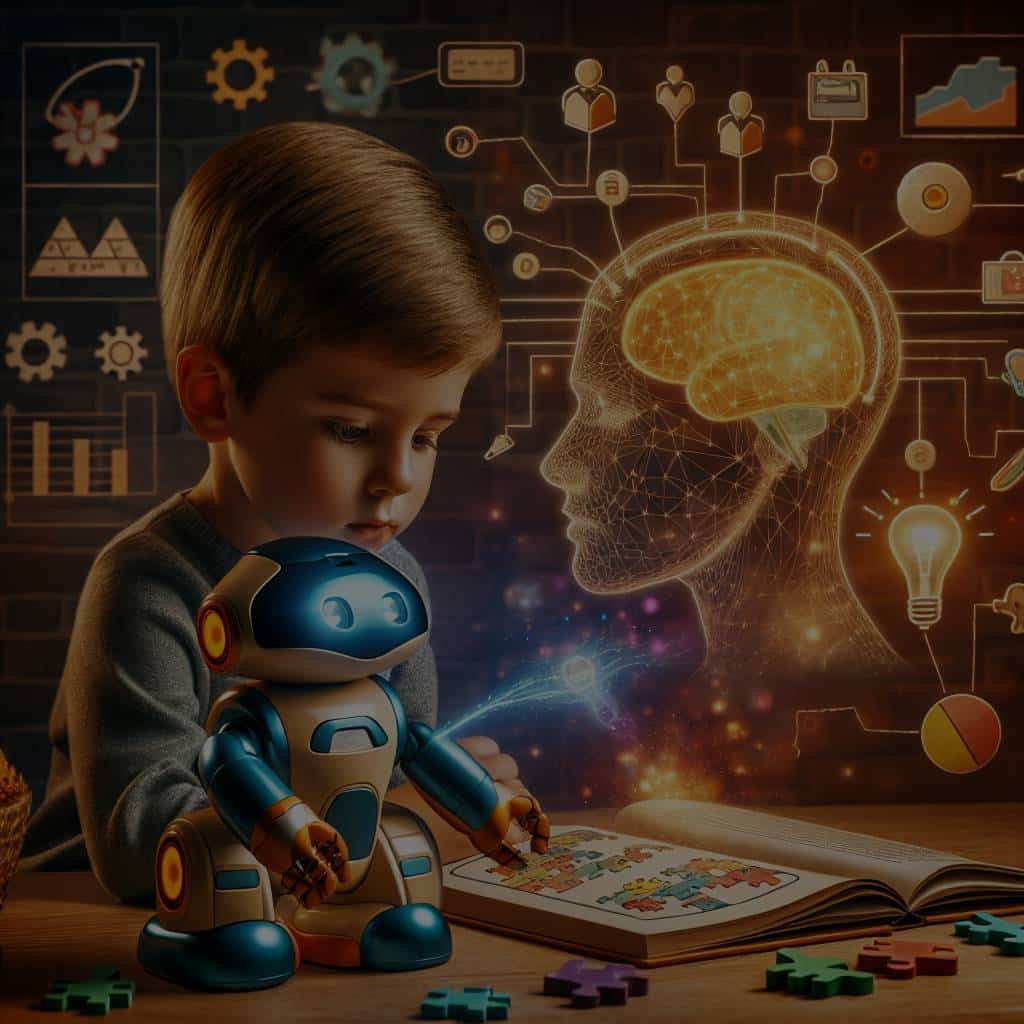What’s the Impact of Social Robotics on Enhancing Learning for Autistic Children?

In this digital age, technology continuously redefines the landscape of learning and interaction. The innovative field of social robotics stands as a testament to this evolution. Particularly, it is the children on the autism spectrum, referred to as ASD (Autism Spectrum Disorder), who have been substantially impacted. This article delves deep into the realm of social robotics and autism, exploring scholarly studies that encapsulate the positive effects of robotic interactions on children with ASD.
The Interplay of Social Robotics and Autism
Robots designed for social interaction have created a significant paradigm shift in addressing the unique learning needs of children with autism. This section unpacks the intriguing interplay between social robotics and autism.
Have you seen this : What’s the Future of Lab-Grown Meats and Alternative Proteins?
Social robots are essentially machines designed to interact with humans in a socially engaging manner. They are often used in educational settings to enhance learning experiences. For children with ASD, these robots can significantly boost their learning capabilities and social interaction skills.
Children on the autism spectrum often find it challenging to understand and reciprocate social cues. They struggle with social interaction, communication, and often exhibit repetitive behavior patterns. However, social robots, with their predictable and straightforward interactions, provide a comfortable medium for these children to learn and practice social skills.
In parallel : How Can Digital Wallets and Fintech Apps Enhance Financial Inclusion?
Several scholarly interventions and Randomized Controlled Trials (RCTs) have been conducted to ascertain the impact of social robots on children with ASD. They have consistently shown promising results, with children with autism demonstrating improved social skills after interacting with social robots.
Exploring the Scholarly Studies on Social Robotics and Autism
Numerous studies have delved into the realm of social robots and autism. The Google Scholar database alone provides a plethora of articles, RCTs, and interventions focusing on this subject. This section explores these scholarly studies and their findings.
The benefits of using robots for teaching social skills to children with ASD have been documented in several studies. For example, a study published in the Journal of Autism and Developmental Disorders found that children with autism who interacted with a humanoid robot over several sessions showed significant improvement in their social skills.
Another study, published in the Proceedings of the National Academy of Sciences, highlighted that children on the autism spectrum were more effective in learning social skills from a robot than from a human instructor. The participants found the consistent and predictable behavior of robots less overwhelming and more conducive to learning.
However, it’s crucial to note that while these studies provide valuable insights, further research is needed to fully understand the long-term benefits and potential drawbacks of using social robots for children with autism.
The Role of Social Robots in Enhancing Learning for Autistic Children
Social robots can play a significant role in enhancing the learning experiences of children with autism. This section explores the specific ways in which these robots can contribute to the learning process.
Firstly, social robots can effectively teach social skills. They can be programmed to demonstrate appropriate social behavior, which children with autism can then learn and mimic. This includes basics like maintaining eye contact, taking turns in a conversation, and understanding facial expressions.
Secondly, social robots can also help children with autism to learn academic skills. They can be used to teach math, language, and other subjects in a fun and engaging way. This approach not only makes learning more enjoyable for the child but also allows them to learn at their own pace.
Lastly, social robots can provide a sense of companionship to children with autism. These children often experience social isolation due to their difficulty in forming peer relationships. A social robot can serve as a friend and confidante, helping to alleviate feelings of loneliness.
The Future of Social Robots in Autism Interventions
Looking ahead, the use of social robots in autism interventions appears promising. This section explores the future prospects of this intriguing intersection of technology and autism.
The possibility of personalized robotic interventions is an exciting prospect. In the future, robots could be tailored to meet the specific needs of each child with autism, taking into account their unique learning style, strengths, and weaknesses. This could drastically improve the effectiveness of robotic interventions, leading to even more significant progress in the child’s learning and social skills.
Furthermore, as technology continues to advance, we can expect to see even more sophisticated social robots. These future robots may be capable of understanding and responding to a wider range of human emotions, leading to more nuanced and meaningful interactions with children with autism.
The Intersection of Social Robots and School Education for Autistic Children
The inclusion of social robots in the school education of children with autism is an exciting prospect. This section explores how social robots can be integrated into the school curriculum to enhance learning for children with autism.
Social robots can be used as teaching aids in classrooms, assisting teachers in delivering lessons in a more interactive and engaging manner. For children with autism, who often struggle with conventional teaching methods, this can make learning a more enjoyable and fruitful experience.
Moreover, social robots can serve as ‘classroom buddies’ for children with autism. These robots can accompany the child throughout the school day, providing constant companionship and support. This can greatly enhance the child’s school experience, helping them feel more comfortable and accepted in the school environment.
In conclusion, the impact of social robots on enhancing learning for autistic children is a topic of great significance and potential. With the continuous advancement in technology, we can expect to see even more innovative and effective uses of social robots in the education of children with autism. Despite the need for further research, the current body of evidence strongly suggests that social robots can play a crucial role in improving the learning and social skills of children with autism.
Social Robots as a Tool for Teaching Social Skills
Upon analyzing various scholarly studies pulled from Google Scholar, one significant impact of social robots on children with autism is their role in teaching social skills. This section examines how social robots can serve as effective tools for teaching these valuable skills.
Learning social skills can be a complex process for children on the autism spectrum. Understandably, many children with ASD find it difficult to comprehend and respond appropriately to social cues. This is where social robots come into play. These robots can be programmed to demonstrate appropriate social behaviors, such as maintaining eye contact, taking turns in conversation, or understanding facial expressions.
For instance, a study highlighted by Scholar Crossref found that children with autism spectrum disorders showed improvement in joint attention skills after interacting with a humanoid robot. The predictable and consistent behavior of the robot made learning these skills less overwhelming for the children. This demonstrates the potential of robot-assisted learning to enhance social skills in ASD children.
It’s important to note that the learning process is not merely about mimicking the robots. Instead, it is a more profound interaction where the child learns to understand what each social cue entails and how to respond appropriately.
Inclusion of Social Robots in School Education
Incorporating social robots into school education can significantly enhance learning for children on the autism spectrum. This section explores the various ways that these innovative learning tools can be integrated into the school curriculum.
The consistent, predictable behavior of social robots can make them ideal teaching aids, especially for children with ASD who may struggle with traditional teaching methods. For example, a humanoid robot can help teach math or language skills in an interactive and engaging way. This approach not only makes learning more fun, but it also allows the child to learn at their own pace, adapting to their individual learning style.
Moreover, social robots can serve as constant companions or ‘classroom buddies’ for children with autism. This continuous companionship can help alleviate feelings of social isolation often experienced by ASD children. The robot’s presence can also help enhance the child’s school experience, making them feel more comfortable and accepted in the school environment.
In conclusion, the innovative field of social robotics holds significant promise in enhancing learning for children on the autism spectrum. The growing body of scholarly evidence supports the positive impact of these robots on teaching social skills and in their potential inclusion in school education. Looking ahead, the future of social robotics in autism interventions is optimistic, with potential for personalized robot-assisted learning and more sophisticated robots that can respond to a wider range of human emotions. Despite the need for further research in this area, current evidence strongly suggests that social robots can play a crucial role in improving the learning and social skills of children with autism. The advancements in technology and the continued exploration in this field can lead to more effective and innovative uses of social robots in the education of ASD children.
